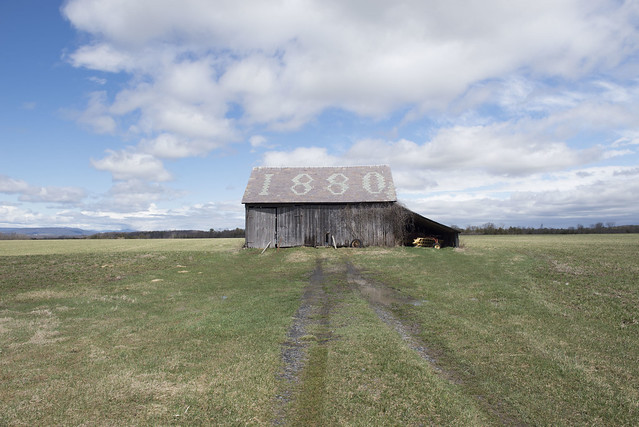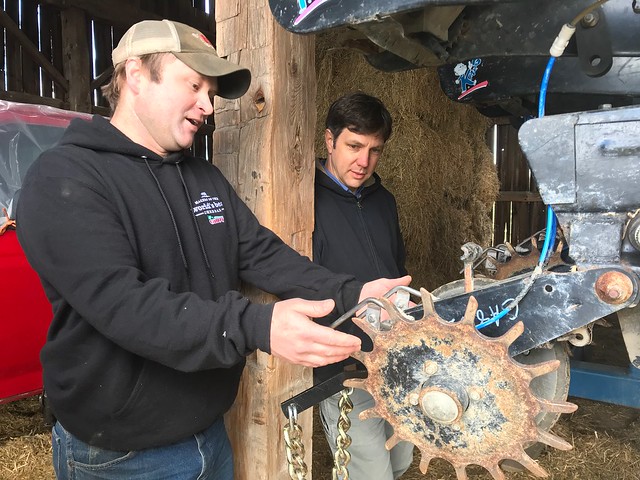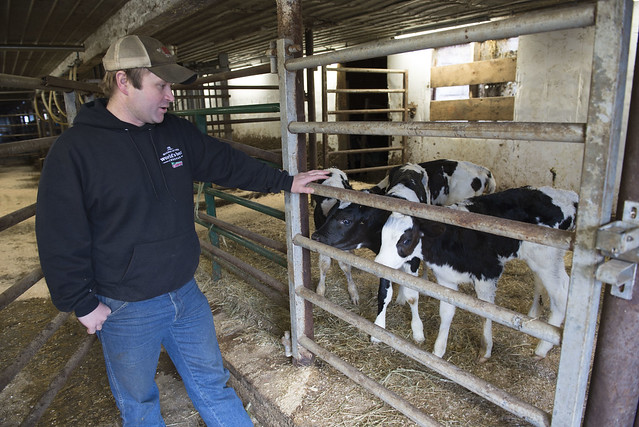
Overlooking the southernmost shores of Vermont’s Lake Champlain lies Lucas Dairy Farm. Two years ago, first-generation farmer Jon Lucas moved his family and 150 milking cows and young stock to Orwell, Vermont, to lease the hillside land.
In the valley below their farm sits a rustic wooden barn. Its roof, tiled with the faded date of construction, “1880,” reveals the rich history of this lakeside landscape. In the 138 years since the barn’s construction, multiple generations of farmers tended this valley to keep it in agriculture. Inclement weather combined with the county’s compactable clay soils have made farming in this valley a challenge. Despite challenges, Jon demonstrates that farming with conservation practices can reduce the region’s impact on water quality and protect this beautiful landscape's natural resources.
The dairy is nestled within Vermont’s East Creek Watershed. Water that lands within this area eventually flows into Lake Champlain, depositing nutrients and chemicals picked up along its journey. Of the approximately 20,500 acres located in the watershed, half of it is still in agriculture. As a result, USDA’s Natural Resources Conservation Service made this region a priority focus area to help reduce phosphorus runoff from agriculture and improve water quality. USDA NRCS and partners are devoting financial and technical assistance to farmers and landowners in East Creek Watershed and to help meet the state’s nutrient reduction strategy. NRCS works one-on-one with farmers like the Lucas’ to identify areas of nutrient loading and apply conservation practices on their land.
But, this system doesn’t come without its challenges. Some obstacles include extreme rain and clay soils. Compared to other soil compositions, soils with predominately fine, clay particles are stickier, leaving little room for water movement. The tiny pore spaces between soil particles are easily compacted, which makes it difficult for plants to uptake water and nutrients and for no till machinery to work the soil.

George Tucker, a NRCS soil conservationist who assists Jon, compares the difficulty of working with compacted clay soils to going to the beach and trying to stick your fingers in the sand versus dragging them through pavement. Imagine a plant root also attempting to travel through that pavement.
Jon designs his farming system to work with nature and applies conservation practices, such as no-till and cover crops to improve soil health and reduce his impact on water quality. Adaptive land stewards like Jon understand how to adjust their conservation practices to work with the region’s challenges, including inclement weather and compactable clay soils.
Jon kept at it last spring, when heavy rains delayed corn planting until early June. While some farmers followed convention, Jon adapted, working with Mother Nature. His plan included implementing reduced tillage and planting sorghum, an annual grass that can handle wetter conditions and be used as an alternate source of silage.
It isn’t simple to try new practices or plant new crops, as there are risks involved. But, Jon is determined and his perspective on trying new methods sums it up. “If you tried no-till for the first time last year, you were going to have a poor crop whether you implemented no-till or not. You can’t walk into it assuming it is pass or fail. There are so many variables that figure into whether a practice will work or not. You have to try it differently, each year. You have to keep adjusting your strategy and talking to other farmers.”
Jon credits NRCS’ assistance for helping him implement the practices. He explains that when he gets a loan from the bank, the money “will often go towards increasing milk production, so NRCS’ targeted assistance is especially beneficial for applying practices specifically for conservation.”
The Lucas family represents the next cohort of farm families to take responsibility for the care of this lakeside landscape and its resources. In partnership with NRCS, farmers like Jon will implement innovative conservation practices that protect Vermont’s soil and water quality for future generations.
Visit the Environmental Quality Incentives Program for assistance with improving water quality on your land.

